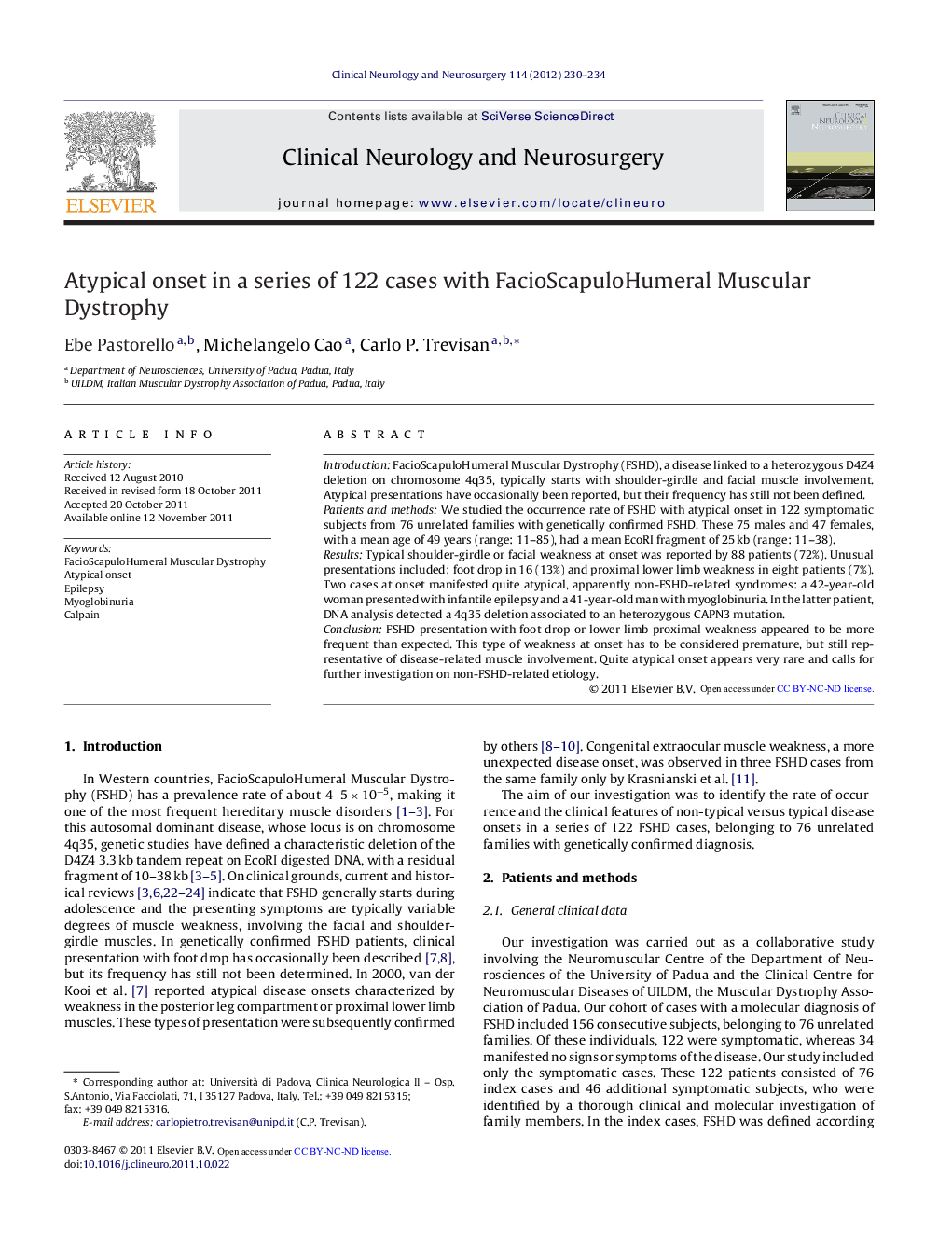| Article ID | Journal | Published Year | Pages | File Type |
|---|---|---|---|---|
| 6007182 | Clinical Neurology and Neurosurgery | 2012 | 5 Pages |
IntroductionFacioScapuloHumeral Muscular Dystrophy (FSHD), a disease linked to a heterozygous D4Z4 deletion on chromosome 4q35, typically starts with shoulder-girdle and facial muscle involvement. Atypical presentations have occasionally been reported, but their frequency has still not been defined.Patients and methodsWe studied the occurrence rate of FSHD with atypical onset in 122 symptomatic subjects from 76 unrelated families with genetically confirmed FSHD. These 75 males and 47 females, with a mean age of 49 years (range: 11-85), had a mean EcoRI fragment of 25Â kb (range: 11-38).ResultsTypical shoulder-girdle or facial weakness at onset was reported by 88 patients (72%). Unusual presentations included: foot drop in 16 (13%) and proximal lower limb weakness in eight patients (7%). Two cases at onset manifested quite atypical, apparently non-FSHD-related syndromes: a 42-year-old woman presented with infantile epilepsy and a 41-year-old man with myoglobinuria. In the latter patient, DNA analysis detected a 4q35 deletion associated to an heterozygous CAPN3 mutation.ConclusionFSHD presentation with foot drop or lower limb proximal weakness appeared to be more frequent than expected. This type of weakness at onset has to be considered premature, but still representative of disease-related muscle involvement. Quite atypical onset appears very rare and calls for further investigation on non-FSHD-related etiology.
